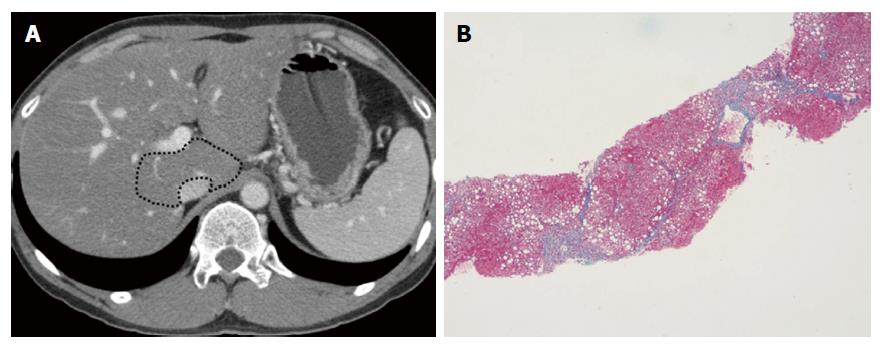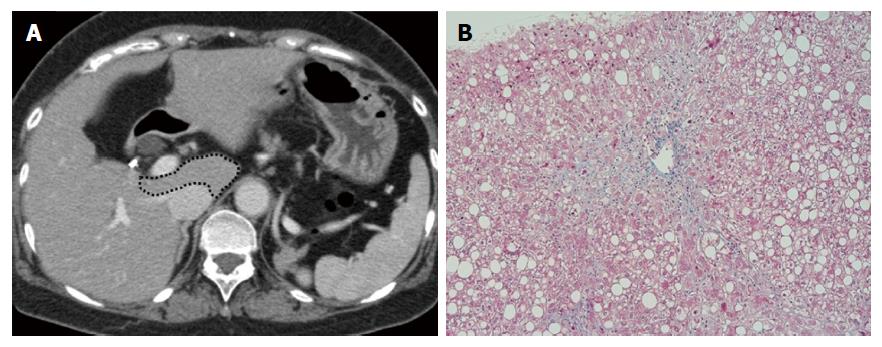Copyright
©The Author(s) 2016.
World J Gastroenterol. Oct 28, 2016; 22(40): 8949-8955
Published online Oct 28, 2016. doi: 10.3748/wjg.v22.i40.8949
Published online Oct 28, 2016. doi: 10.3748/wjg.v22.i40.8949
Figure 1 Correlation between volume percentage of caudate lobe and fibrosis stage.
Strong correlation was observed between liver fibrosis stage and volume percentage of caudate lobe (P < 0.001, r = 0.815).
Figure 2 A 60-year-old woman with nonalcoholic steatohepatitis, fibrosis stage 4.
The total volume of the liver was 1169.4 mL, and the volume percentages of the left lateral segment, left medial segment, caudate lobe and right lobe were 26.6%, 18.7%, 12.9% and 41.8%, respectively (A). The dotted line shows the caudate lobe. The biopsy specimen showed liver cirrhosis with regenerative nodules (B).
Figure 3 A 39-year-old man with nonalcoholic steatohepatitis, fibrosis stage 3.
The total volume of the liver was 1805.4 mL, and the volume percentages of the left lateral segment, left medial segment, caudate lobe and right lobe were 21.3%, 12.3%, 5.6% and 60.8% respectively (A). The dotted line shows the caudate lobe. The biopsy specimen showed bridging fibrosis (B).
Figure 4 A 63-year-old woman with nonalcoholic steatohepatitis, fibrosis stage 1.
The total volume of the liver was 1190.9 mL, and volume percentages of the left lateral segment, left medial segment, caudate lobe and right lobe were 21.8%, 13.7%, 4.3% and 60.2%, respectively (A). The dotted line shows the caudate lobe. The biopsy specimen showed pericellular fibrosis at zone 3 (B).
- Citation: Fujita N, Nishie A, Asayama Y, Ishigami K, Ushijima Y, Takayama Y, Okamoto D, Shirabe K, Yoshizumi T, Kotoh K, Furusyo N, Hida T, Oda Y, Fujioka T, Honda H. Fibrosis in nonalcoholic fatty liver disease: Noninvasive assessment using computed tomography volumetry. World J Gastroenterol 2016; 22(40): 8949-8955
- URL: https://www.wjgnet.com/1007-9327/full/v22/i40/8949.htm
- DOI: https://dx.doi.org/10.3748/wjg.v22.i40.8949












